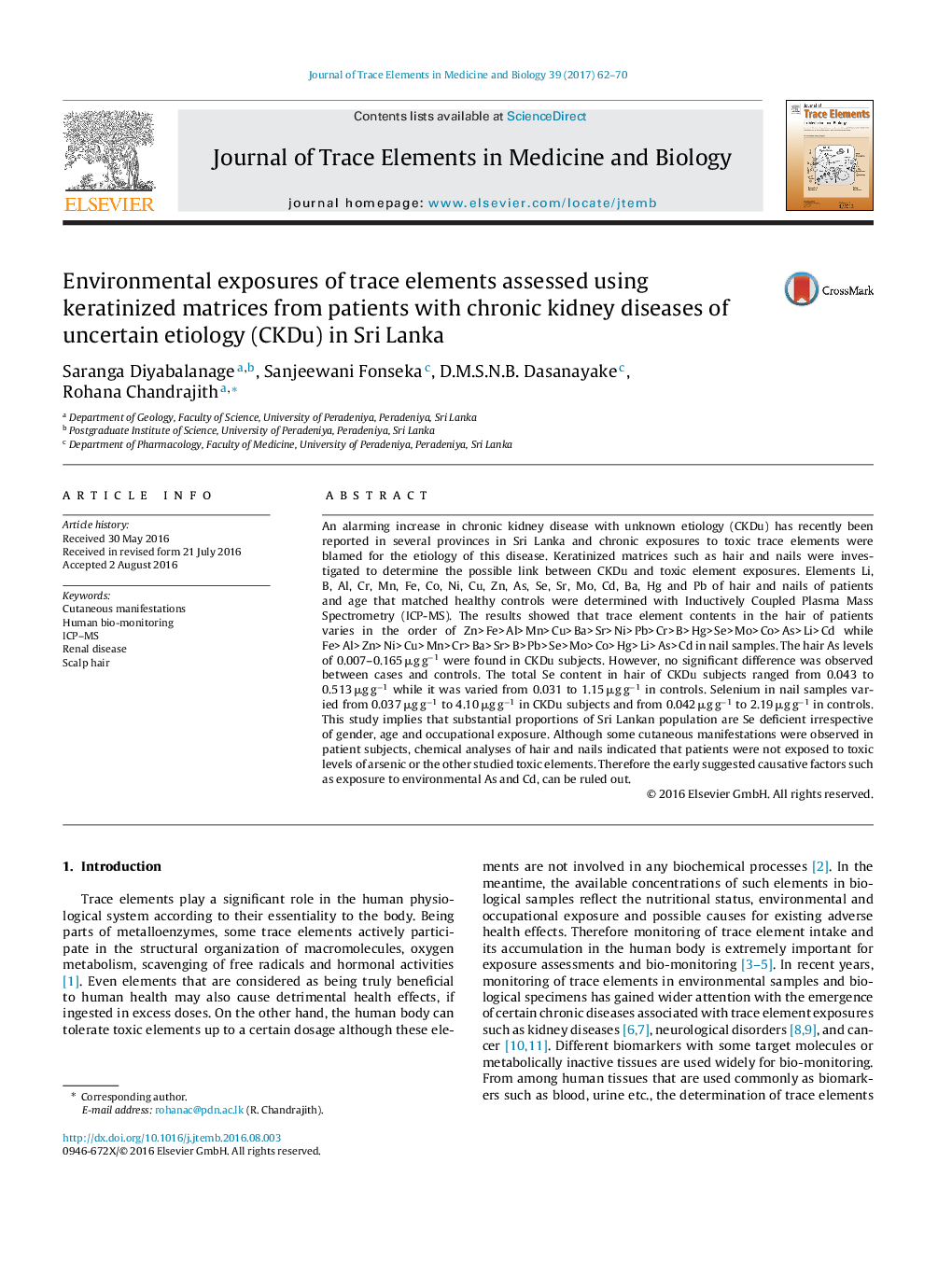| کد مقاله | کد نشریه | سال انتشار | مقاله انگلیسی | نسخه تمام متن |
|---|---|---|---|---|
| 1226333 | 1494817 | 2017 | 9 صفحه PDF | دانلود رایگان |
• Chronic kidney disease with uncertain etiology (CKDu) is widespread in the north central dry zone regions of Sri Lanka.
• Hair and nails from CKDu patients and healthy controls were analyzed for their trace element contents using ICP-MS.
• Although cutaneous manifestations were observed in patients, no evidences were found for chronic arsenic exposure.
• Results of this study revealed that CKDu is not associated with environmental trace element exposure.
An alarming increase in chronic kidney disease with unknown etiology (CKDu) has recently been reported in several provinces in Sri Lanka and chronic exposures to toxic trace elements were blamed for the etiology of this disease. Keratinized matrices such as hair and nails were investigated to determine the possible link between CKDu and toxic element exposures. Elements Li, B, Al, Cr, Mn, Fe, Co, Ni, Cu, Zn, As, Se, Sr, Mo, Cd, Ba, Hg and Pb of hair and nails of patients and age that matched healthy controls were determined with Inductively Coupled Plasma Mass Spectrometry (ICP-MS). The results showed that trace element contents in the hair of patients varies in the order of Zn> Fe> Al> Mn> Cu> Ba> Sr> Ni> Pb> Cr> B> Hg> Se> Mo> Co> As> Li> Cd while Fe> Al> Zn> Ni> Cu> Mn> Cr> Ba> Sr> B> Pb> Se> Mo> Co> Hg> Li> As> Cd in nail samples. The hair As levels of 0.007–0.165 μg g−1 were found in CKDu subjects. However, no significant difference was observed between cases and controls. The total Se content in hair of CKDu subjects ranged from 0.043 to 0.513 μg g−1 while it was varied from 0.031 to 1.15 μg g−1 in controls. Selenium in nail samples varied from 0.037 μg g−1 to 4.10 μg g−1 in CKDu subjects and from 0.042 μg g−1 to 2.19 μg g−1 in controls. This study implies that substantial proportions of Sri Lankan population are Se deficient irrespective of gender, age and occupational exposure. Although some cutaneous manifestations were observed in patient subjects, chemical analyses of hair and nails indicated that patients were not exposed to toxic levels of arsenic or the other studied toxic elements. Therefore the early suggested causative factors such as exposure to environmental As and Cd, can be ruled out.
Figure optionsDownload as PowerPoint slide
Journal: Journal of Trace Elements in Medicine and Biology - Volume 39, January 2017, Pages 62–70
